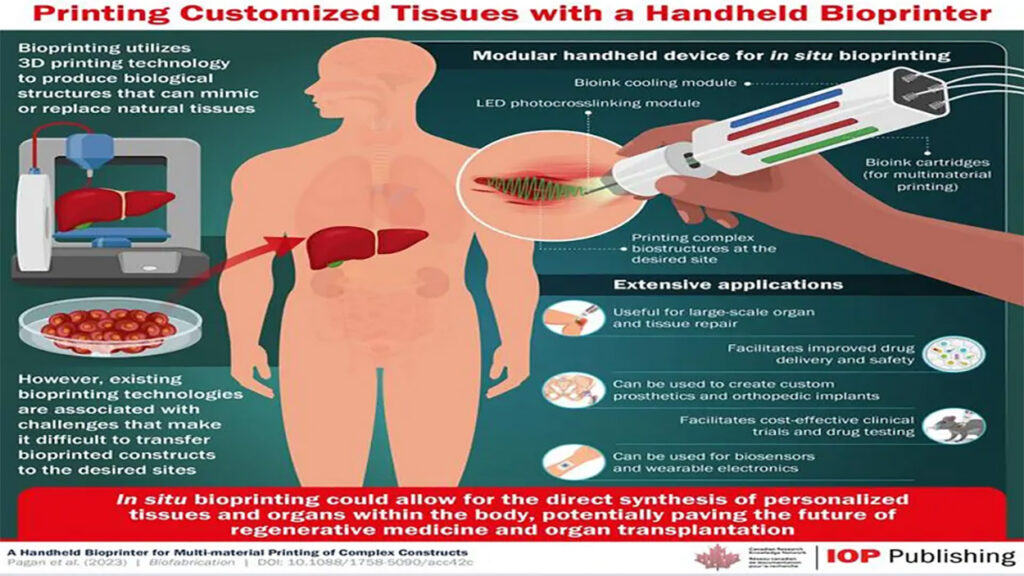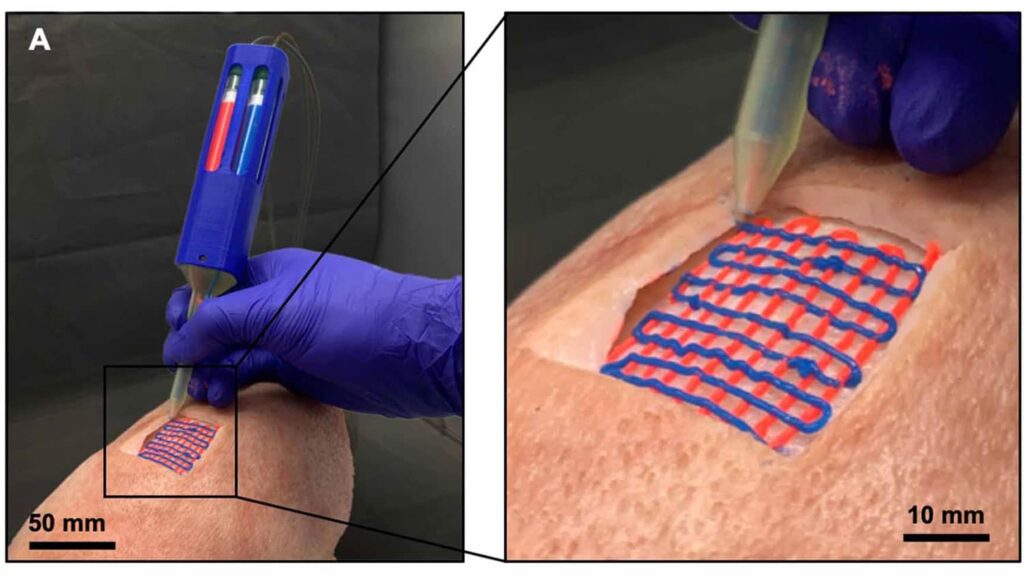Printing Organs and Tissues In Situ with Handheld Bioprinter
Some tissue damages are easy to treat. Damaged organs are another matter. Sometimes, treating damaged organs and tissues turns into complex procedures, often requiring stitching them up.
Innovative bioprinter
Repairing damaged organs and tissues would not be too much of a problem if the studies of a team of Canadian researchers at the University of Victoria could succeed in their current research project.
According to the study published recently in Biofabrication, their breakthrough study can help repair organs and tissues using a novel handheld device. This 3D printer can print biocompatible structures in situ. This device can potentially make dramatic changes in physicians’ treatment processes.
Innovations in medical and computer technology continue to have a positive impact on making healthcare services better. Medical instruments are smaller and more effective, and many medical and surgical procedures become less invasive, allowing patients to feel less pain and recover faster.
Treating and repairing damaged organs and tissues are often difficult because these body parts are delicate, and a slight error can have drastic repercussions. Thus, developing specialist tools and surgeons’ skills are critical in such medical procedures.
Bioprinting in situ
Bioprinting in place, which uses 3D printing of biocompatible tissues and structures directly within the body, has been ongoing for a few years and making good progress. But a 3D bioprinter can hinder the process because of its size.
Canadian researchers may provide the right solution as they have recently developed a handheld bioprinter. It can print multiple materials. At the same time, it can control the physicochemical properties of the tissues it prints. The team foresees the device will open the path for a wider range of applications in prosthetics, custom orthotics, drug development and testing, and regenerative medicine.
Regenerative medicine
The growth of regenerative medicine led to significant improvements in patients’ lives worldwide. Regenerative medicine made repairing, replacing, or regenerating damaged organs and tissues possible. It is a promising solution to medical issues such as risks associated with transplantation or lack of organ donors.
One of the huge advancements in regenerative medicine is on-site bioprinting, which can directly synthesize organs and tissues within human bodies. In situ bioprinting shows huge potential in helping repair and regenerate faulty organs and tissues.
Despite the progress in the field, the technologies for bioprinting still have some limitations. For example, particular devices are only compatible with certain types of bioink, and other printers can only produce small patches of tissues each time. Further, the printer’s designs are often complex, which makes them costly. Likewise, the designs restrict their effective application.

New design
The University of Victoria in Canada’s breakthrough study on a handheld in situ bioprinter was led by Mr. Erik Pagan and Associate Professor Mohsen Akbari. They developed a bioprinter with a modular design, which is more convenient while allowing the user to print complex biocompatible tissues or organs.
The handheld device’s key feature is its multiple bioink cartridges. A pneumatic system independently controls each ink cartridge. Therefore, the device operator has enough control over the printing mixture, making it easier to create the structures with the needed properties. Further, the handheld device includes a light-emitting diode photocuring module and a cooling module for added control.
Applications
According to Prof. Akbari, their in situ bioprinter has many bioengineering applications. It can be used for repairing tissues with extensive damage caused by cancer, surgery, or trauma that usually need large-scale tissue constructs. They also believe that in the long-term, the technology they use to develop the device can eliminate the need for organ donations and lower the risks of rejection and other organ transplantation problems so patients can enjoy healthier and longer lives.
Their technology can also help develop a drug delivery system allowing direct, timely, and precise quantity essential drugs to be delivered to affected tissues or organs. Their published report also stated that the technology could help discover new drugs faster because scientists can develop more accurate models for drug testing.
Another area where scientists can use the technology is in developing custom orthopedic implants and prosthetics. Because the device is portable, it becomes easier for doctors to match a patient’s tissue anatomy with increased convenience and accuracy.
Inviting collaboration
Prof. Akbari and his team published the findings of their study through a transformative agreement between the Canadian Research Knowledge Network and IOP Publishing. The agreement allows authors to publish their work in over 70 IOP Publishing journals at no cost. There will be free access to the articles that can help the research community. Overall, the agreement can help physicians and researchers to improve the range of regenerative medicine and more researchers to do collaborative research to ensure the further development of the 3D bioprinting technology.
